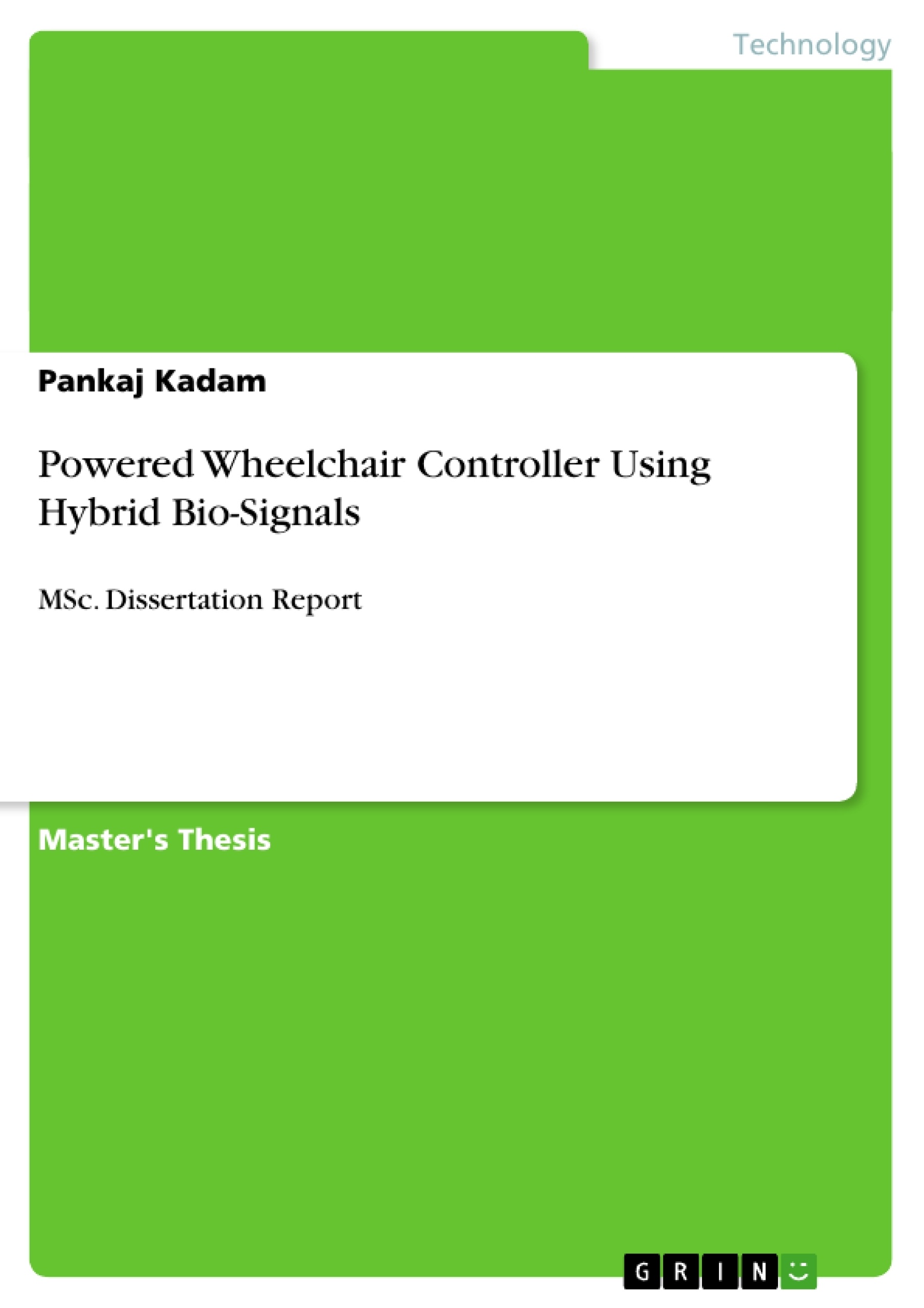The idea of using a powered wheelchair, for people with mobility limitation and the elderly has been around for quite a while. Most of these wheelchairs require the use of upper limbs to control them. On the contrary, this project aims to help quadriplegic individuals to use their wheelchair with minimum human assistance. It involves the use of Bio-signals mainly EMG EOG and EEG to control the intelligent wheelchair using Artificial Neural Network and Sensor Fusion technology. The setup can also be use for below the neck paralyzed or elderly people with less upper arm strength.
It’s a new approach towards wheelchair control which is non-invasive, discrete and functional. This document gives details of the human-machine interface, the technical equipment, functionality, evaluation and implementation of the system.
Inhaltsverzeichnis (Table of Contents)
- INTRODUCTION
- History
- Types of wheelchairs
- Manual wheelchairs
- Electric-powered wheelchairs
- Limitation of the electric chairs
- Smart or Intelligent wheelchair
- Current research
- GOALS AND OBJECTIVE
- Project description
- Hardware
- Data acquisition box
- Wheelchair
- Software
- Software description
- Data collection
- Pre-processing and data segmentation
- Feature extraction
- Classification
- Algorithm
- Training and Testing
- Normalizing
- Decision process
- User interface
- EVALUATION
- Component testing
- Sub-system testing
- System testing
- FUTURE DEVELOPMENT
- Challenges faced and recommendations for future work
- PROJECT PLAN
- Work breakdown structure
- Gantt chart
- Conclusion
- REFERENCES
Zielsetzung und Themenschwerpunkte (Objectives and Key Themes)
This project aims to develop a powered wheelchair controlled by bio-signals, specifically eye and facial muscle movements, to provide mobility for quadriplegic individuals. The goal is to create a system that minimizes human assistance and relies on a user-friendly interface.- Human-machine interaction for wheelchair control
- Use of bio-signals (EEG, EMG, EOG) for wheelchair control
- Development of a robust and reliable control system for a powered wheelchair
- Real-time signal processing and feature extraction for efficient wheelchair operation
- Challenges and future directions in bio-signal-based wheelchair control
Zusammenfassung der Kapitel (Chapter Summaries)
- Introduction: This chapter introduces the concept of powered wheelchairs and provides an overview of their history, different types, limitations, and current research in the field. It lays the groundwork for the need for intelligent wheelchairs, specifically for quadriplegic individuals.
- Goals and Objectives: This chapter describes the project in detail, outlines the hardware and software components involved, and discusses the various stages of data processing and control algorithms used. It provides a comprehensive understanding of the system's design and implementation.
- Evaluation: This chapter presents the evaluation process for the developed system, including component testing, sub-system testing, and system testing. It highlights the key performance metrics and evaluates the system's effectiveness in providing wheelchair control based on bio-signals.
- Future Development: This chapter discusses the challenges faced during the project and proposes recommendations for future work. It explores potential improvements and future research directions in the field of bio-signal-based wheelchair control.
- Project Plan: This chapter outlines the project plan, including the work breakdown structure and Gantt chart. It provides a structured overview of the project's timeline and milestones.
Schlüsselwörter (Keywords)
This work focuses on the development and evaluation of a powered wheelchair controlled using a combination of bio-signals, specifically EEG, EMG, and EOG. The system utilizes human-machine interaction, real-time signal processing, feature extraction, and artificial neural networks to achieve a reliable and user-friendly wheelchair control interface for individuals with limited mobility. Key concepts include intelligent wheelchair technology, bio-signal analysis, control system design, and human-machine interaction.- Citar trabajo
- Pankaj Kadam (Autor), 2010, Powered Wheelchair Controller Using Hybrid Bio-Signals, Múnich, GRIN Verlag, https://www.grin.com/document/210927



